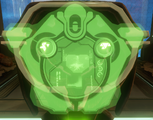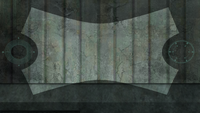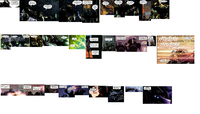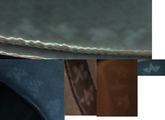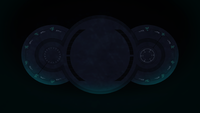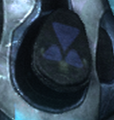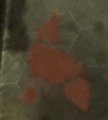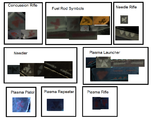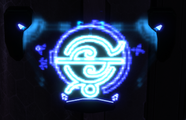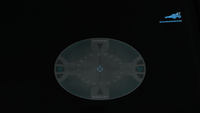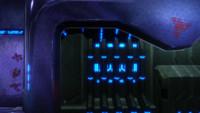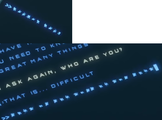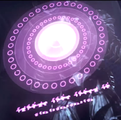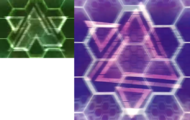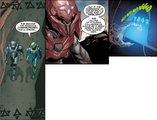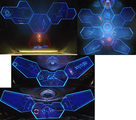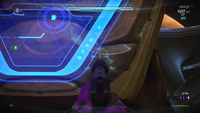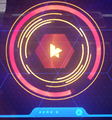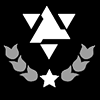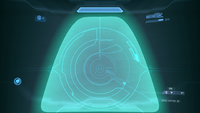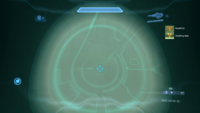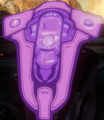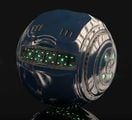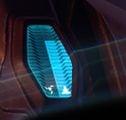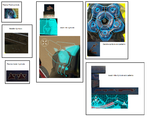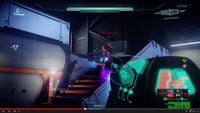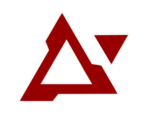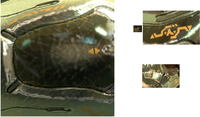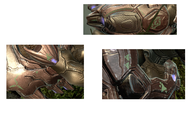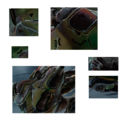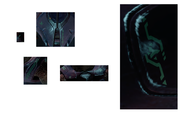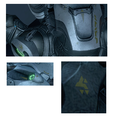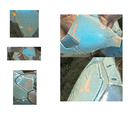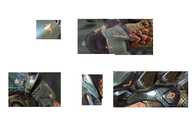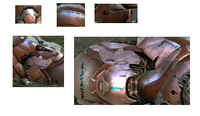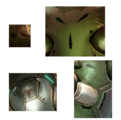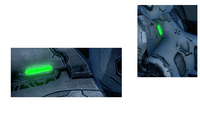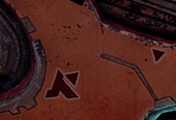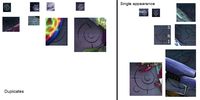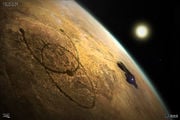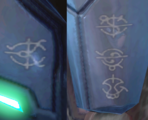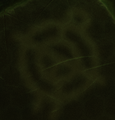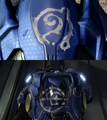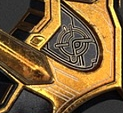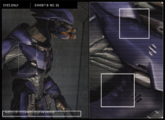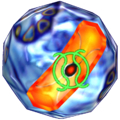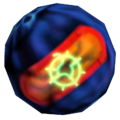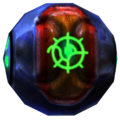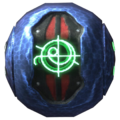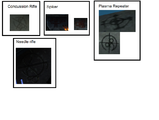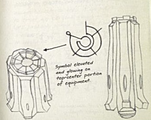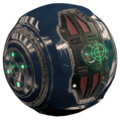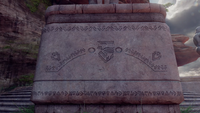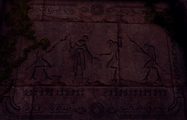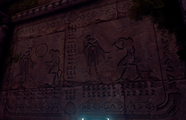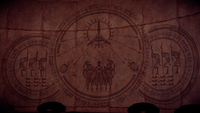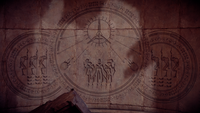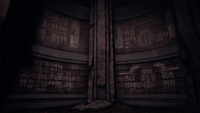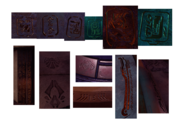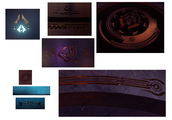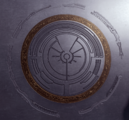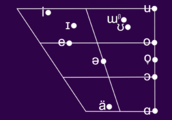Sangheili (language): Difference between revisions
From Halopedia, the Halo wiki
BaconShelf (talk | contribs) |
m (→Weapons and vehicles: Link cleanup) |
||
| Line 326: | Line 326: | ||
File:Fuel Rod Symbols.png|[[Type-33 fuel rod gun]] zoom on off target and on target symbols in ''Halo 4''. | File:Fuel Rod Symbols.png|[[Type-33 fuel rod gun]] zoom on off target and on target symbols in ''Halo 4''. | ||
File:Halo_4_Ghost_symbols.png|Ghost patterns related to this type of symbols in ''Halo 4''. | File:Halo_4_Ghost_symbols.png|Ghost patterns related to this type of symbols in ''Halo 4''. | ||
File:Lich Controls.png| | File:Lich Controls.png|{{Pattern|Kmiro'sish|Lich}} control panel with these symbols on it in ''Halo 4''. | ||
File:Plasmagrenadesigils.JPG|Covenant symbols on a plasma grenade. | File:Plasmagrenadesigils.JPG|Covenant symbols on a plasma grenade. | ||
File:Shade_Symbols.png|Type-26 Shade symbols in ''Halo 5: Guardians''. | File:Shade_Symbols.png|Type-26 Shade symbols in ''Halo 5: Guardians''. | ||
Revision as of 12:15, April 13, 2022
- "Their language doesn't translate in a literal manner, and each word has multiple meanings."
- — Cortana[1]

This article is part of a series on
Sangheili
- Technology
- History
- Culture, Politics & Economy
To check out information for other sapient species, see here!
Sangheili describes multiple dialects of a language spoken by the species of the same name. Though the member species of the Covenant had their own unique languages, an advanced dialect of Sangheili, known as basic Sangheili,[2] came to serve as the lingua franca throughout the entire Covenant Empire.[3] And as such, many names of member species are derived from the Sangheili.[4] Even after the fragmentation of the Covenant, many former client species of the Covenant continue to use the Sangheili language in lieu of their native tongues; Sangheili has even replaced their native language for many.[3] A specific trade pidgin also existed within the Covenant fringe.[5]
Description
Text, or writing, in Sangheili appears to be mostly triangle shapes and composed almost completely of equilateral triangles. The triangular characters have been seen oriented both in the horizontal left-to-right direction and in a vertical right-to-left direction.[6]
Though originating with the Sangheili, an advanced dialect of their language has come to be the Covenant lingua franca, used to connect the different races and species.[3] Curiously, in several instances of Forerunner-related terminology, the Sangheili appear to use the English translations of the original Forerunner terms, as for "Forerunner", "Requiem", "Reclaimer", "Didact", and "Librarian".[7][Note 1] During the San'Shyuum-Sangheili War, the San'Shyuum obtained a comprehensive understanding of the Sangheili language by brutally torturing and interrogating prisoners of war. After establishing peace with the Sangheili, the San'Shyuum of the fledgling Covenant relied on translation software built into their anti-gravity chairs to understand the language.[8] The Ussans developed in isolation from other Sangheili, and their language evolved into a different form of the Sangheili dialect. It possessed similarities to Old Sangheili,[9] but the language developed into a new dialect that could not be readily understood by the "average" Sangheili.[10]
Structure
Sangheili words generally consists of simply structured syllables. Most syllables consist of a single consonant (e.g. /s/) or a consonant complex (e.g. /t͡s/) followed by a long vowel or a diphthong or in rarer cases a short vowel or a short vowel followed by "n". Other types of syllables include a moraic "nn", a short vowel, a single diphthong, a triphthong, or a long vowel. Finally, some syllables in the middle or, more commonly, at the end of their word might have their vowel component devoiced.
Intonation
Sangheili generally seems to possess word stress, though the possibility of dialects featuring pitch accent shouldn't necessarily be excluded. Sangheili words usually possess only a primary stress with longer words sometimes possessing a secondary stress in the first syllable. The primary stress usually falls on the penult (second from last syllable). However, in many words the stress might fall on the ultima (last syllable) or antepenult (third from last syllable).
Phonology
Sangheili language includes 8 main vowels (/ä/, /ɑ/, /i/, /ɪ/, /e̞/, /ɔ/, /o/ and /u/) and 18 main consonants (/s/, /z/, /ʂ/, /ʐ/, /q/, /ɢ/, /ʈ/, /ɖ/, /f/, /b̪/, /ħ/, /j/, /ɰβ/, /ɱ/, /ɳ/, /ɴ/, /ɻ/ and /ʔ/). Three more consonants also appear in words borrowed from other Sangheili dialects or alien languages. These are /p̪/, /ɺɽ~ɭ/ and /ʋ/. In certain instances, the sounds /o̞/, /ɕ/, /ʑ/, /w/ and /ɽ/ can appear as allophones of /ɔ/, /ʂ/, /ʐ/, /ɰβ/ and /ɻ/ respectively. Furthermore, /ɯβ/ and /ʊ/ are allophones of /u/ while /ə/ can serve as allophone of /ä/ and /e̞/ when those two sounds are weakened.
Consonants /ɳ/, /ɱ/ and /ɴ/ can in some cases be moraic, in which case they are geminated and pronounced as /ɳ:/, /ɱ:/ and /ɴ:/. In addition some consonant complexes can be formed. These are /ʈ͡ʂ/, /ʈ͡ɕ/, /ɖ͡ʐ/, /ɖ͡ʑ/, /t͡s/, /ʈɰβ/, /ɖɰβ/, /ɳɰβ/ and /ɳɱ/.
/ɳɱ/, /ɳ:/ and /ɱ:/ appear only when /ɳ:/ precedes a labiodental /b̪/ or /ɱ/ resulting in /ɳ:/ being pronounced as either /ɳɱ/, /ɳ:/ or /ɱ:/ for phonological reasons.
When followed by /i/, consonants /ʂ/, /ʐ/, /ʈ͡ʂ/ and /ɖ͡ʐ/ can be pronounced as /ɕi/, /ʑi/ /qji/, /ɢji/, /ħji/, /ʈ͡ɕi/ and /ɖ͡ʑi/ respectively.
When followed by /i/, consonants /q/, /ɢ/ and /ħ/ can be pronounced as /qji/, /ɢji/ and /ħji/ respectively. When followed by /e̞/, consonants /q/, /ɢ/ and /ħ/ can be pronounced as /qje̞/, /ɢje̞/ and /ħje̞/ respectively.
/ɴ/ and /ɴ:/ appear before or after the uvular consonants /q/ and /ɢ/ in place of /ɳ/ and /ɳ:/. /ɺɽ~ɭ/ can sometimes be heard as either ɺɽ or ɭ but is generally an intermediate sound. The sound /ɺɽ~ɭ/ itself has no human equivalent. /ɻ/ and /ɽ/ allophones of the same consonant. In reality they are only approximates of the Sangheili r sounds which has no human equivalent. Most users prefer to use /ɻ/. /ä/ is near front and closer to the Japanese /ä/ but some speakers pronounce it as a central vowel like the Italian /ä/. Some speakers use /ä/ insead of /ɑ/. /e̞/ and /i/ are near front vowels and not front vowels. /ɔ/ and /o̞/ are allophones of the same vowel. As such their use depends on the speaker’s preference. /ʊ/ can be used instead of /u/ when /u/ is short only. /ɯβ/ can be used instead of /u/ regardless of whether /u/ is short or long. The sound itself is compressed and neither rounded nor fully unrounded. It is pronounced like the Japanese u. /ɰβ/ is a compressed labiovelar approximant. It can also be symbolized as /wβ/. It is pronounced like the Japanese w.
Sometimes /ɖ͡ʐ/ can be pronounced as /ʐ/ or /ɖ͡ʐ~ʐ/.
Sangheili also makes use of the following diphthongs:
/e̞ɪ/, can be pronounced as /e̞j/ before vowels
/ou/ also pronounced as /oɯβ/, /oʊ/, /o̞u/, /o̞ɯβ/ or /o̞ʊ/
/äɪ/
/ɔɪ/ also pronounced as /o̞ɪ/ and sometimes pronounced as /ɔj/ or /o̞j/ before vowels.
/äu/ also pronounced as /äɯβ/ or /äʊ/ (rare)
Phonetic transcription
In order to phonetically transcribe Sangheili, 343 Industries uses the following transliteration system:
- a e correspond to /ä/ and /e̞/ respectively. Both can correspond to /ə/ if the syllable is weakened.
- i corresponds to /ɪ/.
- ah corresponds to /ɑ:/. Some speakers pronounce it as /ä:/ though.
- eh corresponds to /e̞:/
- o corresponds to /ɔ/ and /o̞/ depending on the speaker's preference.
- oh corresponds to /ɔ:/ and /o̞:/ depending on the speaker's preference.
- u corresponds to /u/. Some speakers might also pronounce it as /ɯβ/ or /ʊ/.
- uh corresponds to /u:/. Some speakers might pronounce it as /ɯβ:/.
- aa corresponds to /ɑ:/. Some speakers pronounce it as /ä:/ though.
- ee corresponds to /i:/ but can be pronounced as /ɪ:/ or /i~ɪ:/
- uu corresponds to /u:/. Some speakers might also pronounce it as /ɯβ:/.
- oo corresponds to /u:/. Some speakers also pronounce it as /ɯβ:/ or /o:/.
- y corresponds to /j/ when it is between two vowels, or at the beginning of a word. When it is at the end of a word or before a consonant or after any consonant except nn it corresponds to /ɪ/.
- t corresponds to /ʈ/.
- d corresponds to /ɖ/.
- k corresponds to /q/ or /k~q/, but is pronounced as /qj/ when followed by /i/ or /e̞/.
- g corresponds to /ɢ/or /g~ɢ/, but is pronounced as /ɢj/ or /g~ɢj/ when followed by /i/ or /e̞/.
- gh corresponds to /ɢ/ or /ɢh/ depending on the speaker's preference. When followed by e (thus forming ghee) the resulting sounds will be /ɢje̞:/ and /ɢhe̞:/. When followed by ei (thus forming ghei) the resulting sounds will be /ɢje̞ɪ/, /ɢhe̞ɪ/, /ɢji:/ and /ɢhe:/.
- r corresponds to /ɻ/ and /ɽ/ depending on the speaker's preference.
- w corresponds to /ɰβ/. Sometimes some speakers can pronounce it as /w/.
- f corresponds to /f/
- b corresponds to /b̪/
- ch corresponds to /ʈ͡ʂ/, but can be pronounced as /ʈ͡ɕ/ when found before /i/.
- sh corresponds to /ʂ/, but can be pronounced as /ɕ/ when found before /i/.
- j corresponds to /ɖ͡ʐ/, but can be pronounced as /ɖ͡ʑ/ when found before /i/. The sounds /ɖ͡ʐ/ and /ɖ͡ʑ/ can be pronounced as /ʐ/or /ɖ͡ʐ~ʐ/ and /ʑ/ or /ɖ͡ʑ~ʑ/, respectively.
- s corresponds to /s/.
- z corresponds to /z/.
- ts corresponds to /t͡s/.
- n corresponds to /ɳ/. When n is followed or preceded by the uvular consonants /q/ and /ɢ/ it corresponds to /ɴ/ and when followed by any labiodental consonant ( /ɱ/, /b̪/, /p̪/, /f/, /ʋ/) it corresponds to /ɳɱ/ or /ɳ~ɱ/.
- nn corresponds to /ɳ:/. When n is followed by the uvular consonants /q/ and /ɢ/ it corresponds to /ɴ:/ or /ɳɴ/ or /ɳ:/ and when followed by any labiodental consonant ( /ɱ/, /b̪/, /p̪/, /f/, /ʋ/) it corresponds to /ɱ:/ or /ɳɱ/ or /ɳ:/.
- m corresponds to /ɱ/.
- h corresponds to /ħ/, but is pronounced as /ħj/ when followed by /i/.
- tw_, dw_, nw_ correspond to /ʈɰβ/, /ɖɰβ/ and /ɳɰβ/, respectively. The symbol [_] represents any vowel.
- ' corresponds to /ʔ/
- - is used after h to eliminate confusion by separating syllables. For instance is pronounced as uh-eh as /u:i:/ while uheh as /uħe:/
- ae corresponds to /äə/ or /äe̞/ or /e̞:/. In the latter two cases it is not a diphthong.
- ai corresponds to /äɪ/ or /e̞ɪ/ but is usually pronounced /äɪ/.
- au corresponds to /äu/, /äɯβ/ or /äʊ/ depending on the speaker's preference.
- ay corresponds to /e̞ɪ/. When followed by a vowel it corresponds to /e̞j/. It may rarely be pronounced as /äj/ and not be a diphthong when y is part of a different syllable but that is unknown.
- ei corresponds to /e̞ɪ/ or /i:/ (rarely) depending on the speaker's preference.
- ey corresponds to /e̞ɪ/. When followed by a vowel it corresponds to /e̞j/.
- ie corresponds to /äɪ/.
- ou corresponds to /ou/, /oɯβ/, /oʊ/, /o̞u/, /o̞ɯβ/ or /o̞ʊ/ depending on the speaker's preference.
- oy corresponds to /ɔɪ/ or /o̞ɪ/ depending on the speaker's preference. When followed by a vowel it corresponds to /ɔj/ and /o̞j/ respectively.
- eay corresponds to /ɪe̞ɪ/. In this case the diphthong is /e̞ɪ/ and /ɪ/ is syllabic.
- l corresponds to /ɺɽ~ɭ/. It can sometimes be pronounced as ɭ or ɺɽ ɺɽ by the same speaker due to phonological reasons. Most of the times though l is pronounced identically to r.
- p corresponds to /p̪/.
- v corresponds to /ʋ/.
Vocabulary
Note: All words in the following list should not be pronounced as if they were English. Please refer to the phonetic transcription system above.
Ancient words, names, and words of extinct or other Sangheili languages.
- Unggoy - Grunt
- Kig-Yar - Jackal
- Sangheili - Elite
- Yanme'e - Drone
- Jiralhanae - Brute
- Lekgolo - Hunter
- San'Shyuum - Prophet
- Huragok - Engineer (taken from the Forerunner name "Huragok")
- Fohranah/Fohran - Forerunner
- Neru Pe 'Odosima - Servants of the Abiding Truth[11]
- A'ul - Lump of wood[12]
- Kel - Light (that dances on the waves)[13]
- Silket - Spear[14]
- Laqil - New Llanelli[15]
- Sqala - Venezia[16]
- Quillick - Small hunter[17]
- QezoY'asabu - Obsidian Wing[18]
- Dohmayinn - Domain
- Leevrukah - Guardian[Note 2][19]
- Wort - Go
- Nishum - Intestinal parasite; a common insult towards humans[20]
- Jir'a'ul - Lump of wood; a common insult towards Jiralhanae
- Rakoi - Carrow[21]
- Saban'amnsir - Red Fang[22]
Modern words with known or assumed meanings based on context.
- Sangayri - Sangheili
- Kigyaa - Kig-Yar
- Kaydon - Clan leader[23]
- Ossoona - Eye of the Prophet[24]
- Dohmoh'Eenngahnehnn - Human[25][Note 2]
- Dohmoh - Human[25][Note 2]
- Eenngahnehnn - Human[25][Note 2]
- Eenngaynehnn - HumanSpartan Ops[Note 2]
- Oochahns - Shipmaster[25][Note 2]
- Chohkah - Shipmaster [Note 2]Spartan Ops
- Rutah-shiboh - Shipmaster?[Note 2]Spartan Ops, E3 Catherine
- Jeeneh - Soul[Note 2]
- Nou - Cognate with English "no", as a negative response[25]
- Ey - Cognate with English "No" and "not,[25][Note 2][26] also used as an interjection[27]
- Eedah-yook/eedah-ookoh/eedook-yoo - Brother[Note 2]
- Ehnteh-yookoh - Loyal friend[Note 2]Halo 4 - Terminal 1
- Me-hoh - refers to a group in which the speaker is a part of.[25][Note 2]
- Tahshee - refers to a third group, which the speaker is not part of. Also means different.[25][Note 2]
- Kuhtahshee - refers to something that is very different, like an alien or in some cases human.[25][Note 2]
- Kohyahkuhmoh - Vector[25][Note 2]
- Mahgahchee - Approach[25][Note 2]
- Eennah - Like/who/whoever Meaning varies significantly depending on context.[Note 2]
- Reh - make/made[Note 2]
- Deedah - gift [Note 2]Spartan Ops, E3 Catherine
- Kooay - Bring (command form)[Note 2]Spartan Ops, E3 Catherine
- Musuyano - Rest/Remains/Remnant
- gahkaboonoh - travel/go at
- Gah - It, this, He, him
- Woh - He, him
- Jah - I, me, we
- Wah - You (2nd person)
- Nohkoh - Keep (verb,command form)
- Se - away from/from [Note 2]
- Rugee-ee - Rise (command form)[Note 2]
- Runah-udoh - Progress[Note 2]
- Eedahyoh-ahyoh - After him (command form)[Note 2]
- Jahn-rayn-chay - Intruder[Note 2]
- Rohyahyah - Faster (command form)[Note 2]
- Gah raykoh - This is[Note 2]
- Kahnoh - Treasure[Note 2]Halo 4 - Terminal 1
- Ree-oh - will/will be, ~is, are[Note 2]Halo 4 - Terminal 1
- Cheennsay - Warrior[Note 2]
- Cheenoh - Life[Note 2]Spartan Ops, E3 Catherine
- Keeoh-eesay - Death[Note 2]
- Geeoh neechuh - Forever vigilant[Note 2]
- Sunaion - Westward temple of the sea
- Igzuk - An insulting descriptor of some kind.[28]
Transliterated Sangheili
--Nnse-kooree-koocha nee-ey-mawoo.
Dieduckt gahkaboonoh Liebuh-Rahrian musuyano. Kaboonzaywah wohchitah kneekohsoh woorumahtwo.
Nntahbonwon sayoh. Gah-eymayoh Reecleymah toymeh-ushou zosuerohkoh!
Nnkahchee kahnohmoh keenoh ruh-ehnahsheewah cheeruh-eh tayruh-ah. Wahshahteh rohneeahkeh nohkoh wahnahkohroh neeoh-yohnoh sahgahkay. Tahgee wahkeetoh ruhnehdah-ee nnkah-ee tahgee tahruh-yah. Promethean wahzeguhkah kahjee mah.
Neetohmoh neekohnoh.
Cheenoh-ee. Keeoh-eesay. Geeohneechuh.
Cheennsay rehmah-oh. Cheennsay nnteh-hahdeh.
Kaidon sohruh kaysuhtah.
Neeshoh eesah Aabeetah tay shee shoh hyuhmahnn. 'Mdama wooeeee kehnndoh.
Nnrah kahwah ahkeeteh yoh-uh yoh-uh.
Sheennshee roh-ehtahmahnay. Kraken bayoh-hoh.
Promethean ee-hahshee-hoo 'Mdama eerayrah cheennshee. Wahrahtsuah uhtohkah nohkoh eekahtahtah rohkehmah.
Ruhnahshuh ee-hah sheewoo Sangheili ruh-ahnee. Prophet ruh-ah-ee.
Suhrahnahkah sohkuhfoo sohruhsuh.
Gay uhsoh. 'Mdama zurahnahkahgah zohkuh-oh beechee.
Nn-ee eeseh kaysah.
Nn-nee nnseh shuhkohroh.
Didact sah-ee nay.
Non-native speakers of Sangheili
Several species, including humans[29], Mgalekgolo[30], Unggoy[31], and Kig-Yar[32] are able to speak Sangheili. Not all races can speak the same language due to evolutionary design restrictions; for example, the Yanme'e could only communicate through a cacophony of high-pitched clicks and screeches.[33][34] To facilitate easier communications between member species, translation software is used on Covenant ships to decipher words.[35] During and after the Human-Covenant War, several humans were able to understand Sangheili :
- Catherine Halsey[36]
- Evan Phillips[29]
- Luther Mann[37]
- Melody Azikiwe
- Mike Spenser[38]
- Olympia Vale[37]
- Jacob Keyes[39]
Symbol types
There are four known written types of the Sangheili language.
Triangle type (original cipher)
This triangle variant of the written language has a few key features. They are a big triangle surrounded by numerous smaller triangles. These smaller triangles are known to be closer to the corners of the bigger triangle, and can either be floating above the corner, or very close to it. The direction of the bigger triangle is not set, leading to there being numerous possibilities to what one symbol could mean. The bigger triangle is also known to have semi-circles cut out of the middle of its sides, sometimes filled with circles. Sometimes the triangles points are not there and are replaced by a circle. Sometimes rectangles are involved in the symbols. There is also thinner and longer triangle symbols in this type of symbols. These can have a smaller triangle at its smaller side or not.
There are a few different translations for these types of symbols. They are seen often in transmissions and on control panels. These have been in use as early as February 4th 2531 in transmissions during the Harvest Campaign.[40]
Triangle alphabet 1
A Covenant system over Harvest that uses this alphabet.
Triangle alphabet 2
- Halo 2 Wallpaper UNSC.png
A Halo 2 wallpaper with Covenant symbols.
- Halo 2 Wallpaper.png
A Halo 2 wallpaper with Covenant symbols.
- Halo wallpaper translations.png
Translations of the two Halo 2 wallpapers.
Other triangular characters
The Halo 3 campaign Sangheili combat harness triangle symbols.
Sangheili combat harness HUD magnification system with these symbols on it in Halo 3.
Glyph patterns that change one by one on Assembly in Halo 3.
All symbols that appear in Halo: Uprising.
Most of the known countdown of an antimatter charge in The Package.
The symbol of the Covenant.
Symbol at the back of Jackals in Halo Reach.
Symbol that appears on the shoulder armor of Skirmishers in Halo: Reach.
Triangle type seen on a Covenant communication node in Halo: Reach.
Triangle type symbols found on the needle rifle zoom.
Triangle type symbols seen on a Covenant supply case in Halo: Reach.
One of Doctor Halsey's attempt to understand the Covenant language, documented in her journal.
Jul 'Mdama contacting Doctor Halsey in Spartan Ops.
Casket for a dead Arbiter in Halo 2: Anniversary's Terminals.
Type-26 Shade symbols in Halo 5: Guardians.
Bumped triangles type
These triangle symbols are similar to the base triangle type. They are big triangles with a spike coming out near the corners. Smaller triangles, unlike the triangle type symbols, are closer to the middle of the sides, touching the spike coming out near the corner.
There is sometimes a smaller triangle taken out the sides of the bigger triangles, and sometimes triangle taken out the middle of them also.
These are often seen in transmissions and also on control panels. These have been in use as early as April 26, 2526 in transmissions during the Battle of Circinius IV.[41]
Normal use
- Carbine numbers.png
Numbers 00 to 18 that appear on the Type-51 carbine in Halo 4.
- Bumbed Covenant Alphabet.png
Known alphabet of this type.
- Covenant glyphs H4FUD.png
Bumped triangle type used prior to the battle of Circinius IV in Halo 4: Forward Unto Dawn. From right to left written vertically: 7 Reclamation.
Mark VI soft patch for Covenant armor abilities in Halo 4. From left to right it writes: 1, 2, 3, Covenant armor Camouflage, 117.
Bumped triangles in Halo: Escalation. The door panel reads: Opens.
Sangheili data pad in Halo 5: Guardians.
Sunaion control panel.
Weapons and vehicles
Type-55 storm rifle temperature symbol in Halo 4.
Type-27 beam rifle zoom symbols in Halo 4.
Type-33 fuel rod gun zoom on off target and on target symbols in Halo 4.
Kmiro'sish-pattern Lich control panel with these symbols on it in Halo 4.
Type-58 fuel rod cannon zoom symbols in Halo 5: Guardians.
Armor
These are all the symbols and patterns related to them.
Sangheili Storm symbols and patterns in Halo 4.
Sangheili Zealot symbols and patterns in Halo 4.
Sangheili Warrior symbols and patterns in Halo 4.
Sangheili Commander symbols and patterns in Halo 4.
Sangheili Ranger symbols and patterns in Halo 4.
Kig-Yar Storm symbols and patterns in Halo 4.
Kig-Yar Heavy symbols and patterns in Halo 4.
Unggoy Storm symbols and patterns in Halo 4.
Unggoy Heavy symbols and patterns in Halo 4.
Unggoy Ranger symbols and patterns in Halo 4.
Unggoy armor symbol in Halo 5: Guardians.
Forerunner symbol type
These symbols are often borrowed or adapted from actual Forerunner symbols for use in speech, on Sangheili armor, and even on Covenant technology.
External
Covenant Forerunner symbols as seen on Halo2.com.
Symbol pattern used by the Covenant for Harvest.
Two Forerunner type glyphs appearing on a Covenant communication node.
Armor
The non-glowing cyan symbol is found on the back of Stealth Sangheili and Sangheili Zealots.
Sangheili Minor harnesses emblazoned with Forerunner glyphs.
Symbol used on the Prophets' anti-gravity chairs.
Weapons and vehicles
Green plasma grenade symbol in Halo CE.
Symbol that appears on the Type-52 Phantom in Halo Reach.
A symbol that appears in the inner workings of the Kig-Yar point defense gauntlet that closely resembles that of the Iris artifact glyphs.
Green plasma grenade symbol projecting the symbol for Installation 04.
Sunaion and Sangheili ruins symbols
Ancient Sangheili triangle type
An ancient version of the Sangheili script appears in Sangheili ruins and ceremonial curveblades. Symbols similar to the modern triangular symbols appear. They can also be seen on modern Swords of Sanghelios flags.
Ancient Sangheili on Vadam flags in the Halo 2: Anniversary Terminals.
Ancient Sangheili circle type
Usually next to ancient Sangheili triangle types on ancient Sangheili scriptures.
Mural type
This type is numerous symbols and images.
A mural that has a version of the Guardian symbol on it.
Production notes
| Deleted material: Elite speech from Deliver Hope |
|---|
Before the release of Halo 2, the official website at Halo2.com was made to look like a Covenant computer complete with the Sangheili language. This language was a simple cipher with the triangular characters. In addition to Halo2.com, a released wallpaper contained triangular characters that made use of this cipher. After the Halo2.com site, the cipher changed. Two wallpapers were released with an entirely new cipher still using the triangular characters. Neither this cipher or the previous one have been used subsequently, though the triangular characters are still commonly used.
The Covenant speech in Halo: Reach is actually able to be translated.[42] A common useful word to understand in gameplay is "awugapu," which is used to announce that a grenade is being thrown.
The languages in their original form are heard in Halo: Combat Evolved. In Halo 2, their words are translated for the convenience of the player. Elites in Halo: CE spoke a deep, warbling tongue. This was achieved by reversing the voice acting of David Scully. The ever-popular "Wort, wort, wort!" shouted by many Elites during gameplay is actually Sergeant Johnson’s famous "Go, go, go!" reversed and sped up.[43] The hissing-like language of the Jackals is actually the English language reversed. This, and the other Covenant languages (Drones, Hunters), have remained the same since Halo 2.
According to voice actor David Sobolov, who played Ripa 'Moramee in Halo Wars and Jul 'Mdama in Halo 4, the fictional language spoken by the Elites in Halo 4 was a "made-up language that was based on Japanese," that started out as being improvised by the voice actors. Except due to legal concerns, the voice lines and language were intentionally scripted instead. Because of the complexity of the fictional language, "it took almost ten minutes per line to record" and required extra time to record than usual.[44]
In Halo 5: Guardians, Sangheili hieroglyphics were inspired by Islamic, Mongolian, and Indian art, as well as Egyptian and Mayan hieroglyphics.[45]
A Covenant language was created by David Peterson, creator of the Dothraki language used in Game of Thrones, for Halo: The Television Series.[46] Peterson posts transcripts for the words and their translations in a series of posts on Archive of Our Own, accessible here.
Gallery
- Halo 4 Concept Art by Albert Ng 04b.jpg
Concept art of control panels with Sangheili symbols on it.
List of appearances
Notes
- ^ It should be noted that in Spartan Ops subtitles, these terms are phonetically transliterated from Sangheili speech (e.g. "Dieduckt", "Liebuh-Rahrian", "Reecleymah") rather than using their proper spellings.
- ^ a b c d e f g h i j k l m n o p q r s t u v w x y z aa ab ac ad ae af ag ah This is a phonetic spelling. The proper rendering has not been confirmed in canon.
Sources
- ^ Halo: First Strike, page 156
- ^ Halo: Tales from Slipspace, Hunting Party
- ^ a b c Halo Waypoint: Covenant
- ^ Halo: Ghosts of Onyx
- ^ Halo Waypoint: Axl
- ^ Halo 4: Forward Unto Dawn, Part 1
- ^ Halo 4, Spartan Ops
- ^ Halo: Broken Circle, page 22 (Google Play edition)
- ^ Halo: Broken Circle, page 276 (Google Play edition)
- ^ Halo: Broken Circle, page 204 (Google Play edition)
- ^ Halo: Glasslands, page 95
- ^ Halo: The Thursday War, page 24
- ^ Halo: Shadow of Intent, page 23
- ^ Halo: Shadow of Intent, page 45
- ^ Halo: Glasslands, page 295
- ^ Halo: Glasslands, page 262
- ^ Halo: Broken Circle, Chapter 1
- ^ Halo Waypoint: Banshee
- ^ Hunt the Truth Season 2, Episode 04: JACKALS
- ^ Halo: The Thursday War, page 79
- ^ Halo: Envoy - Carrow map
- ^ Halo Waypoint - Canon Fodder #100: Sweet Centennial
- ^ Halo: The Cole Protocol
- ^ Halo: The Flood, page 28
- ^ a b c d e f g h i j k Halo 4 - Terminal 1
- ^ Spartan Ops, E3 Catherine
- ^ Halo 4: Forward Unto Dawn
- ^ HO, chapter 18
- ^ a b Halo: Glasslands, page 17
- ^ Halo 4: Forward Unto Dawn
- ^ Halo 4
- ^ Halo: Mortal Dictata page 92
- ^ Halo: Contact Harvest, page 311
- ^ Halo Encyclopedia (2009 edition), pages 148-149
- ^ Halo: Broken Circle, page 277 (Google Play edition)
- ^ Spartan Ops, S1E8 Expendable
- ^ a b Halo: Hunters in the Dark
- ^ Halo: Mortal Dictata, page 394
- ^ Halo: Combat Evolved, Truth and Reconciliation
- ^ Halo Wars Launch Site Original Source Defunct
- ^ Halo 4: Forward Unto Dawn
- ^ Marty O'Donnell AMA
- ^ EliteSpeak
- ^ Youtube - TFcon: Halo 4 had its own Language w/Bumblebee voice actors David Sobolov & Jon Bailey
- ^ The Art of Halo 5: Guardians, page 82
- ^ Twitter, Kiki Wolfkill (@k_wolfkill): "@CharlieBMurphy literally learned an entire new language and performed beautifully in that language. Unreal. Language created by David Peterson who created Dothraki for GoT #HaloWatchParty" (Retrieved on Mar 25, 2022) [archive]



